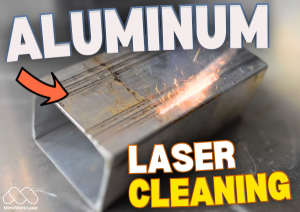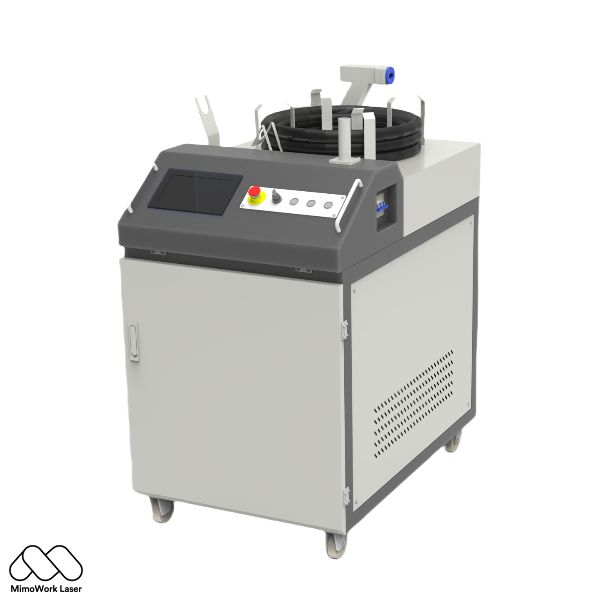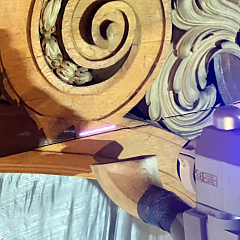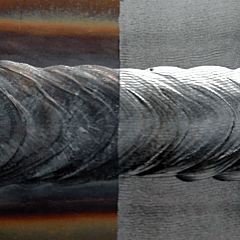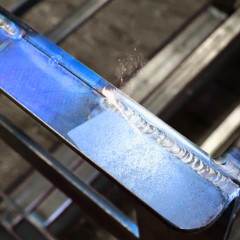8 Things About Pulsed Laser Cleaner
(You Need to Know)
Buying a Pulsed Laser Cleaner? Not Before Reading This
Understanding Pulsed Laser Cleaning: A Comprehensive Guide
Discover the essentials of pulsed laser cleaning
Including how to optimize settings for different materials
The importance of pulse energy
And maintaining your equipment
Table of Content:
Power vs. Cleaning Quality
Higher Power = Better Cleaning Quality?
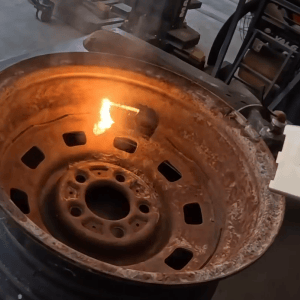
Pulsed Laser Cleaning Rust on Car Tire
When it comes to laser cleaning
Higher power does not necessarily translate to better cleaning quality.
While increased power may speed up the cleaning process
Quality is often more crucial, especially in a laser cleaning business.
So, what constitutes good cleaning quality?
It's about effectively removing contaminants without damaging the underlying material.
Achieving this requires careful adjustment of several settings.
Adjusting Laser Settings for Pulsed Laser Cleaner
It's All about the Right Settings
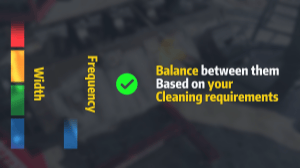
Balance Between Laser Width & Laser Frequency
In the control panel of a laser cleaner, you can adjust various settings.
Pay special attention to the laser pulse frequency and width, as these factors significantly influence cleaning effectiveness.
Higher Frequency:
This setting allows the laser to penetrate tougher and thicker contaminants, such as rust and oxide films on metal.
Higher Width:
A wider pulse helps protect the base material, as it emits energy for a longer duration.
You might wonder if using both high frequency and width will ensure efficient cleaning without risking damage to the base material.
Unfortunately, these two settings are closely related
Typically, only one can be adjusted higher at a time.
Thus, you must choose based on your specific cleaning requirements.
Pulsed Laser Cleaning Machine is Perfect for Paint & Rust
Why not Start Today?
Delicate vs Tough Materials
Fine Tune the Settings based on Application & Material
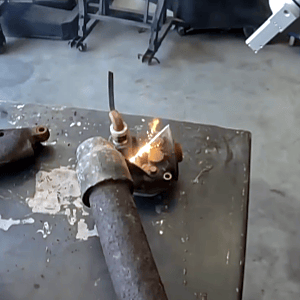
For Heavy Rust Laser Cleaning: High Frequency & Low Width
Delicate Materials
Such as stripping paint from wood or cleaning paper
Prioritize lower frequency and higher width.
This combination minimizes heat exposure to the cleaning surface
Safeguarding the underlying material from excessive heat
While still achieving effective cleaning.
Tough Materials
Conversely, when dealing with tough or thick materials, like removing heavy rust from metal or thermal barrier coatings
Opt for higher frequency and lower width.
This setting enables more pulses per second, with each pulse being short and intense
Effectively removing even the most stubborn contaminants.
For a more technical approach to laser cleaning, consider the concept of pulse energy.
Understanding Pulse Energy
Understand the Concept of Pulse Energy = Understand Laser Cleaning
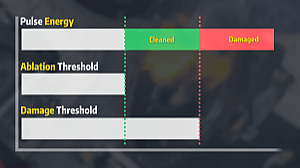
A Chart Showcasing the Relations Between Different Thresholds
In laser cleaning, two energy thresholds are crucial: the Ablation Threshold and the Damage Threshold.
Ablation Threshold:
This is the energy level at which the pulse can heat and evaporate the contaminant WITHOUT harming the base material.
Damage Threshold:
This is the point at which the pulse energy can & will cause damage to the base material.
Ideally, the pulse energy used in laser cleaning should exceed the ablation threshold but stay below the damage threshold.
Single Mode vs. Multi Mode
Focus Laser Spot Size or Spread it up?

For Heavy Rust Cleaning: Single Mode is Better than Multi Mode
Single Mode
Single-mode lasers focus the energy like a needle
Making them powerful enough to clean most contaminants easily.
However, without proper adjustment, they can also damage the underlying material.
Multi Mode
Multi-mode lasers spread the energy over a larger area
Making them gentler and more suitable for lighter cleaning tasks
Such as removing thin rust, oil, or carbon deposits.
This mode is preferable when it’s critical to avoid damaging the base material
As in cleaning rubber molds or stripping wood.
Getting Help on Pulsed Laser Cleaning Settings
Finding the Right Settings Could be Difficult
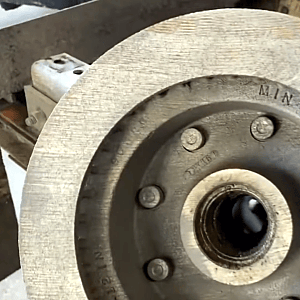
Cleaning Quality Can be Ensured With the Right Setting
If you're unsure about which settings to use for specific cleaning tasks, don’t hesitate to reach out for help!
Upon purchasing a laser cleaner, you will receive pre-stored settings tested for common materials.
With a bit of fine-tuning, you should be able to handle 90% of cleaning applications.
What about the Remaining 10%?
For the remaining 10%, feel free to contact us via email or WhatsApp, and our technicians will be ready to assist you.
Choosing Between Pulsed & Continuous Wave (CW) Laser Cleaners?
We Can Help Make the Right Decision Based on Applications
Pulsed vs. Continuous Wave (CW) Lasers
What Differences Made Pulsed Laser Cleaner so Expensive?
You might wonder why you shouldn't just opt for a Continuous Wave (CW) laser cleaner instead of a pulsed laser cleaner.
For one, effective laser cleaning of aluminum is best achieved with a pulsed laser, as it allows precise control over heat output,
Unlike a CW laser, which operates like a flamethrower with a stable, continuous beam.
CW lasers are more suitable for large-scale heavy cleaning tasks.
Maintenance about Laser Cleaning Machines
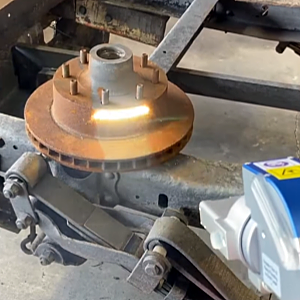
Laser Cleaning Machine Requires Significantly Less Upkeep
Regarding maintenance, both pulsed and CW laser cleaners require significantly less upkeep
Compared to traditional cleaning methods like sandblasting or dry ice blasting.
CW lasers typically have fewer component failures when used correctly.
However, since pulsed laser cleaners utilize more complex technology, they may need a bit more care.
With this information on pulsed and CW laser cleaners, you can make informed decisions about your cleaning needs.
If you found this guide useful, please share it!
For more tips and tricks on laser cleaning, check out the articles on our website, where you'll find field-tested resources to assist you further.
Do you Know How to Clean Aluminum with Pulsed Laser Cleaning Machine?
If the answer is no.
Well, at least we do!
Check out this article written by us backed with academic research paper.
As well as some general tips and tricks for cleaning aluminum.
Buying a Pulsed Laser Cleaner? Not Before Watching This
Don't feel like reading or plain text makes it hard to understand?
This is the video version of this article, where we explained everything mentioned in this article. With stunning graphics and animations!
If you enjoyed this video, don't forget to leave a like and subscribe.
And share this video with your friends (If you find it helpful!)
Laser Cleaning at its Finest
The pulsed fiber laser featuring high precision and no heat affection area usually can reach an excellent cleaning effect even if under a low power supply.
Due to the noncontinuous laser output and high peak laser power,
This pulsed laser cleaner is more energy-saving and suitable for fine parts cleaning.
The fiber laser source has premium stability and reliability, with the adjustable pulsed laser, is flexible and serviceable in rust removal, paint removal, stripping coating, and eliminating oxide and other contaminants.
Laser Cleaning Rust is THE BEST | Here’s Why
If you enjoyed this video, why not consider subscribing to our Youtube Channel?
Related Applications You Might be Interested:
Every Purchase Should be Well Informed
We can Help with Detailed Information and Consultation!
Post time: Oct-10-2024


